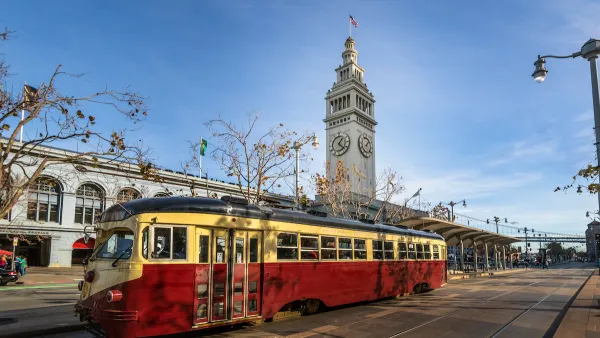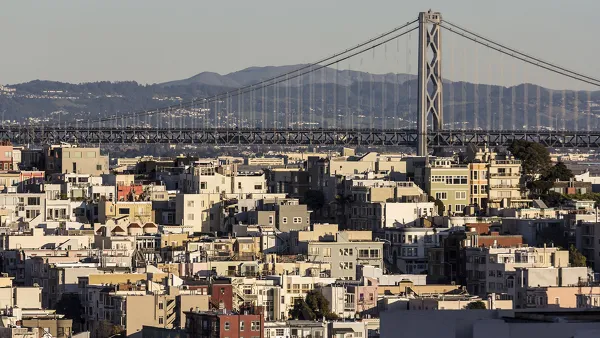With rapidly increasing gaps between costs and funding, the transit systems serving the San Francisco bay area are on an unsustainable path. Egon Terplan offers six solutions to ensure they serve bay area residents long into the future.
With operating costs rising and service falling for the 10% of regional residents who rely on transit to take them back and forth to work every day, and the legions of occasional users, bay area transit is in an unsustainable downward spiral. Terplan summarizes the challenges facing the system thus: "Wages and fringe benefits account for more than three-quarters of the operating and maintenance costs of transit, and the cost of fringe benefits in particular is rising fast. At the same time, budget shortfalls, unpredictable revenues and service cuts are degrading the quality of public transportation."
And the long term impact of a failed transit system would be detrimental to the entire region. "In short, the Bay Area cannot remain economically competitive, nor meet its goals of cutting greenhouse gas emissions, without a transit system that does a better job of getting people where they need to go in a cost-effective and efficient manner."
Interpreting the findings of a recent study called the Transit Sustainability Project (TSP), conducted by the Metropolitan Transportation Commission (MTC), the San Francisco Planning and Urban Research Association (SPUR), of which Egon Terplan is Regional Planning Director, has produced suggestions for overhauling the system based on improvements to six key areas: funding, speeds, fares, competition, information and maps. Each of these suggestions is explained in detail in the article.
Recent news suggests progress is already being made on at least one suggestion, to "[p]roduce a single transit map for the Bay Area and move toward common branding."
FULL STORY: Six Ideas for Saving Bay Area Transit

Analysis: Cybertruck Fatality Rate Far Exceeds That of Ford Pinto
The Tesla Cybertruck was recalled seven times last year.

National Parks Layoffs Will Cause Communities to Lose Billions
Thousands of essential park workers were laid off this week, just before the busy spring break season.

Retro-silient?: America’s First “Eco-burb,” The Woodlands Turns 50
A master-planned community north of Houston offers lessons on green infrastructure and resilient design, but falls short of its founder’s lofty affordability and walkability goals.

Test News Post 1
This is a summary

Analysis: Cybertruck Fatality Rate Far Exceeds That of Ford Pinto
The Tesla Cybertruck was recalled seven times last year.

Test News Headline 46
Test for the image on the front page.
Urban Design for Planners 1: Software Tools
This six-course series explores essential urban design concepts using open source software and equips planners with the tools they need to participate fully in the urban design process.
Planning for Universal Design
Learn the tools for implementing Universal Design in planning regulations.
EMC Planning Group, Inc.
Planetizen
Planetizen
Mpact (formerly Rail~Volution)
Great Falls Development Authority, Inc.
HUDs Office of Policy Development and Research
NYU Wagner Graduate School of Public Service




























